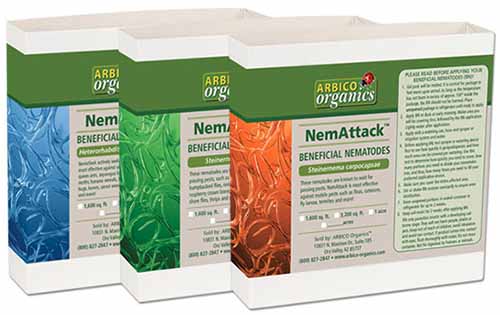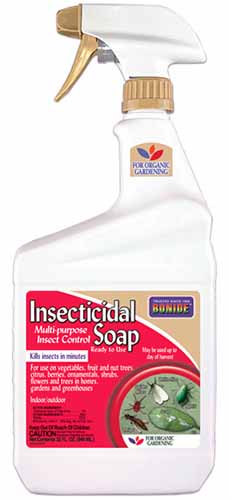If you’re dealing with a camellia problem, it probably won’t help you to know that camellias are generally untroubled by pests.
But take that as consolation if you do have unwelcome visitors – you’ll likely be able to troubleshoot the cause and return your plant to good health.

We link to vendors to help you find relevant products. If you buy from one of our links, we may earn a commission.
You can largely avoid every single pest on this list by doing your best to maintain your plant’s health.
That means watering and fertilizing appropriately, and doing routine maintenance, all of which we lay out in our guide to growing camellias.
Pests don’t usually target healthy plants, but if they do, they rarely do enough damage to cause a serious problem.
Instead, pests tend to look for weakened plants, maybe one that is over- or under-watered, or one that was broken in an ice storm. Maybe your camellia has some underlying disease you haven’t diagnosed.
So, if you’re seeing evidence of pests, we need to be sure that not only are we addressing the pest issue, but giving the camellia a good once-over as well to make sure it’s otherwise as healthy as possible.
With all that out of the way, let’s get into the nitty-gritty details. Here are the common camellia pests we’ll be going over:
We’re going to start with one of the most common garden pests out there and one that most of us have probably encountered before at some point. Ready?
1. Aphids
Ah, aphids. Are there any plants that they won’t make a meal out of?
Black citrus (Toxoptera citricida), green peach (Myzus persicae), and melon aphids (Aphis gossypii) are the most common species found on camellias, but you might see other species as well.
Fortunately identifying the specific species doesn’t matter, and you can treat them all the same.
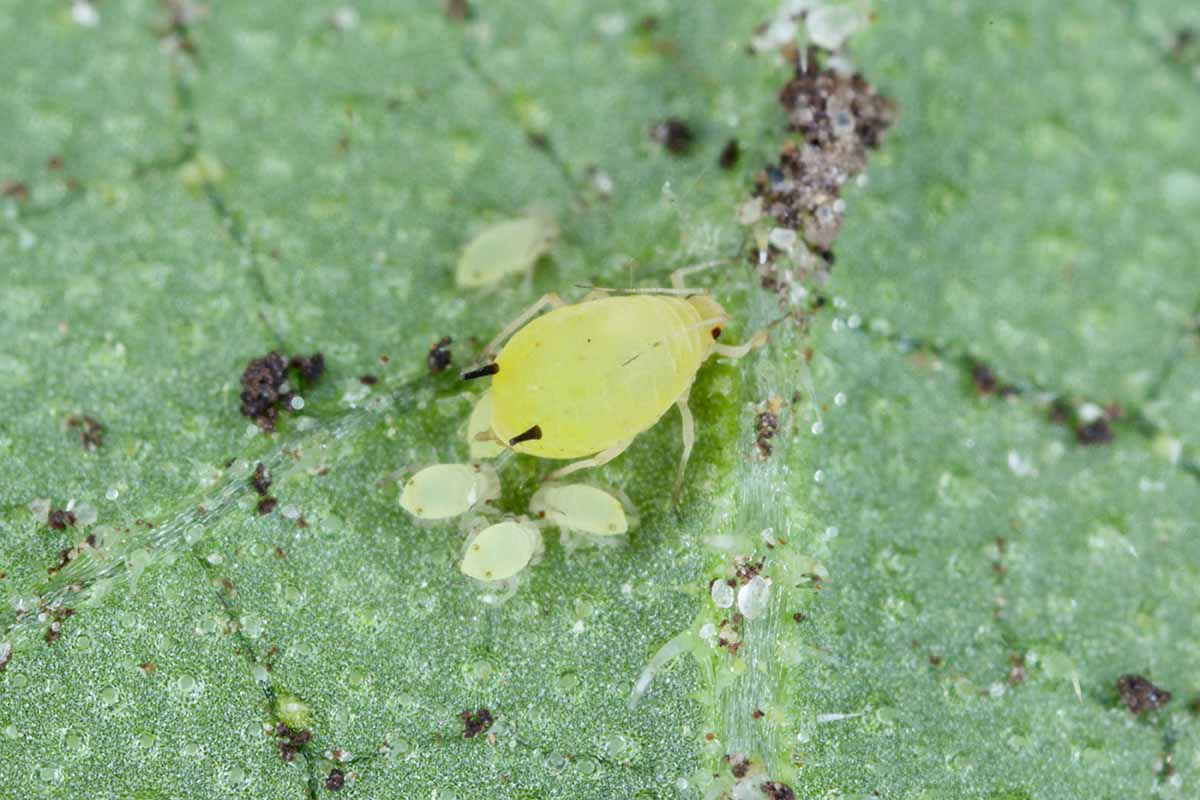
The vast majority of the time, aphids aren’t anything to worry much about.
For one brief moment, I once thought that I had a serious aphid infestation when I came outside one day and noticed several leaves on my camellia covered in a black coating.
I thought for sure it was sooty mold, which is a sure sign you have a pest problem on your hands. Sooty mold is attracted to the sticky, sweet honeydew that aphids excrete as they feed.
As it turns out, the water gutter above the shrub had cracked, and dirty water had been leaking onto some of the leaves for months. Not mold after all!
Let that be a lesson for you: if there is something funky happening to your camellia, don’t immediately assume it’s pests! As I said, camellias are marvelously untroubled by pests most of the time.
Nonetheless, aphids are common garden pests, though they’ll usually visit other plants before they bother with camellias. In general, they stick with young specimens and new growth, causing yellowing leaves and shoots.
Aphids are present in most gardens, and they won’t become a problem until their numbers explode or if your camellia is already stressed.
If you worry that your young plant might be under attack or your garden is out of whack, visit our guide to combating aphids for some advice on how to deal with the situation.
2. Beetles
If you see beetles on your camellia bush and notice some notching on the leaves, it’s possible that black vine weevils (Otiorhynchus sulcatus), cambium curculios (Conotrachelus anaglypticus), cranberry rootworm beetles (Rhabdopterus picipes), Fuller rose beetles (Naupactus godmani), oval leaf beetles (Rhabdopterus deceptor and R. praetextus), or strawberry root weevils (Brachyrhinus ovatus) are paying your plant a visit.
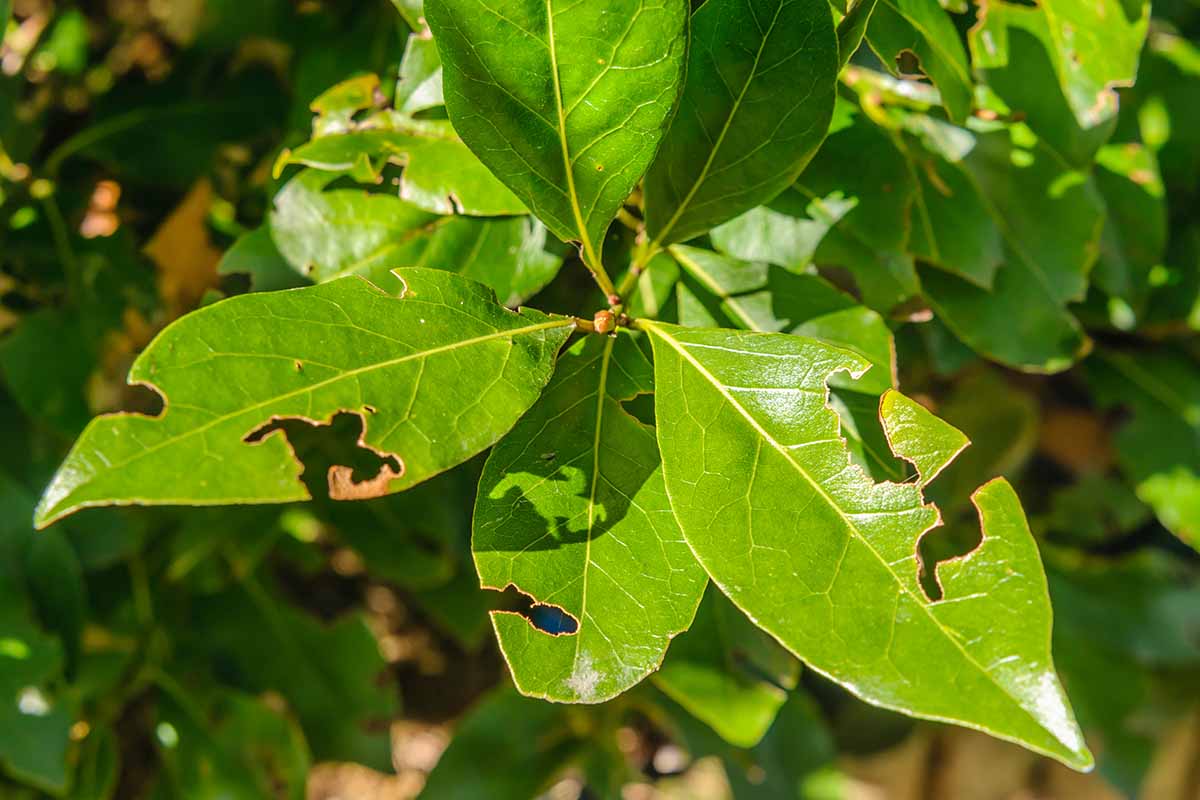
Black vine weevils wait until nighttime to strike. That’s when these half-inch-long black beetles come out and chow down on the foliage, leaving notches in the margins.
It’s kind of ugly, but it’s hardly the end of the world if you see this type of damage.
What could be the end of the world, at least for your camellia, is the damage caused by the weevil larvae.
The adults lay eggs in the soil, and when the larvae emerge, they feed on the roots and basal crown. This can stunt or even kill a plant.
The other beetles on this list mostly stick with eating the foliage and don’t cause major damage like black vine weevils can.
You can usually safely ignore them or handpick them (wear gloves!) to keep the situation under control.
Regardless of which variety you think you are seeing, read our guide to leaf-eating insects that feed on camellias to learn how to positively identify them and get rid of them.
I’ll give you a hint: beneficial nematodes are about to become your best friends.
Beneficial nematodes attack the larval stage of all of these beetles. And no larvae means no adults to eat your camellias.
Triple Threat Combo Beneficial Nematodes
If you want to get a head start, order five, 10, 50, 250, or 500 million live nematodes from Arbico Organics and then read up on what you need to do to apply them while you wait for them to arrive.
3. Mealybugs
Citrus mealybugs (Planococcus citri) and long-tailed mealybugs (Pseudococcus longispinus) are much more common in greenhouses, but you will see them in hot, humid regions in gardens as well.
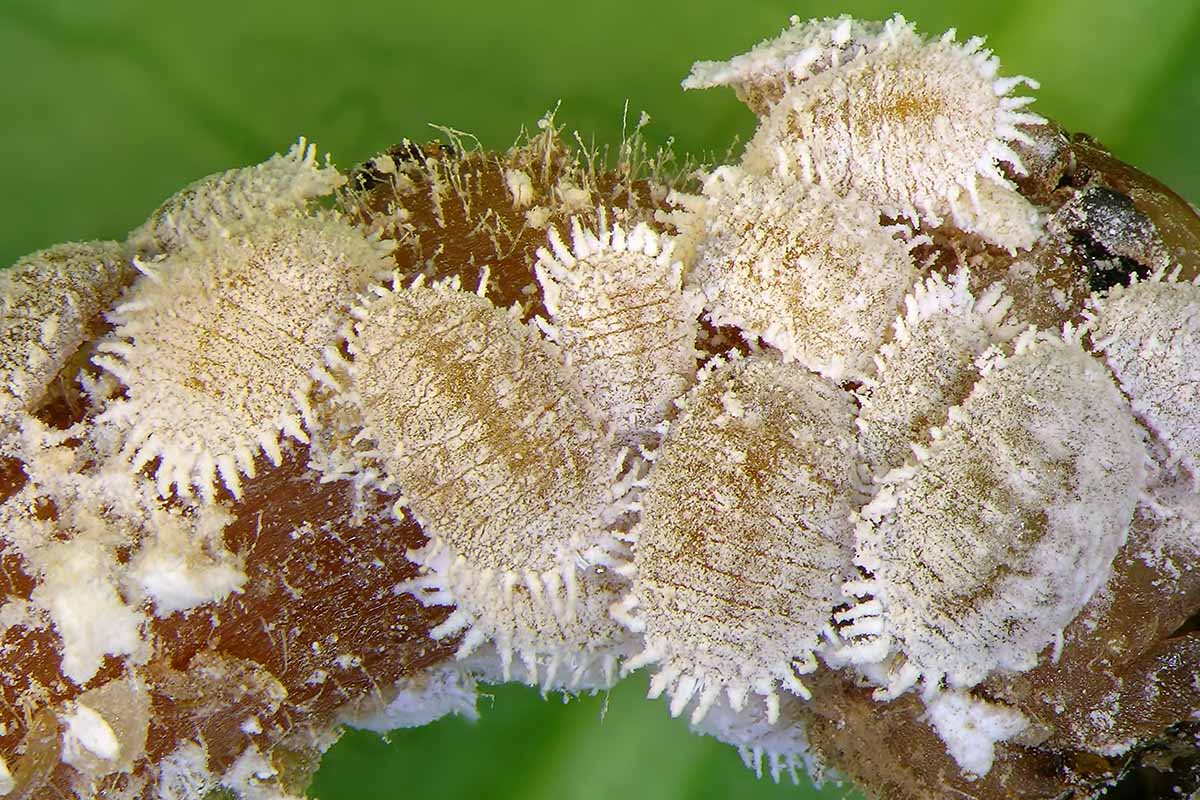
These bugs use their sucking mouthparts to feed on the sap inside the stems and leaves. As they do, they drain and stress the plant, causing leaf yellowing and leaf drop.
These insects are white with a fluffy, cotton-like coating that almost makes them look like a sign of fungal disease rather than a pest. But pests they are.
Insecticidal soap will make fairly quick work of them, but if you want a little more in-depth information on how to identify and control mealybugs, read our guide.
Want to skip that and head straight to the insecticidal soap?
Grab a 12- or 32-ounce ready-to-use spray bottle at Arbico Organics and thoroughly saturate the camellia, taking care to get under the leaves.
Do this on a calm day so you don’t accidentally harm nearby beneficial insects that are just minding their own business.
You will likely need to repeat application every few weeks until there are no more mealybugs present.
4. Mites
There are two types of mites that feed on camellias: gall (Cosetacus camelliae) and spider mites. They’re closely related but cause different types of damage.
Gall mites are not the same as leaf gall, a disease caused by the fungus Exobasidium camelliae.
Gall mites, often called bud mites, are microscopic eriophyid mites that feed on developing buds.
As a result, the infested camellia buds might turn brown or die, or the flowers might show bullnosing, which means infested buds might be slow to form and open.
These mites are hard to identify, but if you suspect your plants have them, read our guide to find out what to do about a gall mite problem.
As for spider mites, these are those common, eight-legged, tiny little tick relatives that spin webs all over many of the plants that we grow in our gardens.
The red spider mite (Tetranychus urticae), which is indeed red, is by far the most common.

These insects like dry conditions and are usually found during the heat of summer, especially in dry, hot areas.
You’ll probably find a few of them on your camellia throughout the growing season.
It’s when they become too numerous that you’ll start to see symptoms like yellowing, drying leaves, and dying shoots.
If you see symptoms you look closely at your plant, you might see the webbing here and there.
Don’t worry if you can’t see the mites themselves, they’re pretty small.
You might find our tips on dealing with spider mites useful.
Sometimes, it’s as simple as blasting them off with a stream of water from the hose every week. But if that doesn’t work, we have plenty of other ideas.
5. Scale
There are many types of scale insects that think a camellia bush is the bee’s knees.
There are armored scales like greedy (Hemiberlesia rapax), oleander (Aspidiotus nerii), and oyster shell (Lepidosaphes ulmi), and there are soft species like black (Saissetia oleae), brown (Coccus hesperidum), and green shield (Pulvinaria psidii).
There are even cottony camellia scale (P. floccifera) and camellia scale (L. camelliae), insects that have evolved specifically to feed on camellias.

All of these look slightly different and have slightly different breeding habits, but it doesn’t really matter which one is your unwelcome visitor. You can treat them all the same.
But first, you need to know whether what you’re seeing is truly scale or some funky, bumpy disease or growth.
Scale insects like to cluster on the undersides of leaves and along the stems. They are oval-shaped or round and relatively flat. Some have a cotton-like waxy coating, and others have a plain waxy coating.
Oyster shell scale looks like a bunch of teeny oysters have taken up residence on your plant.
Sometimes you have to get in really close and look at the insects close up to realize that they are, in fact, insects. You might even want to scrape some off with a butter knife so you can look at them up close.
When enough of them are around, you might see some yellowing or drooping leaves, and the plant will just look kind of sad overall.
Once you’re confident in what you’re dealing with, read our guide to this common garden pest.
It will walk you through options like introducing beneficial predators such as green lacewings.
They make a quick meal out of scale and can be purchased in quantities of 1,000 to a quarter million eggs at Arbico Organics.
Pruning, manual removal, and certain pesticides can help to control an infestation, too.
A Pest-Free Floral Show
Once you identify the pest you’re dealing with and you’ve gotten the situation under control, be sure to look your camellia over well to make sure it hasn’t been weakened due to some other issue.
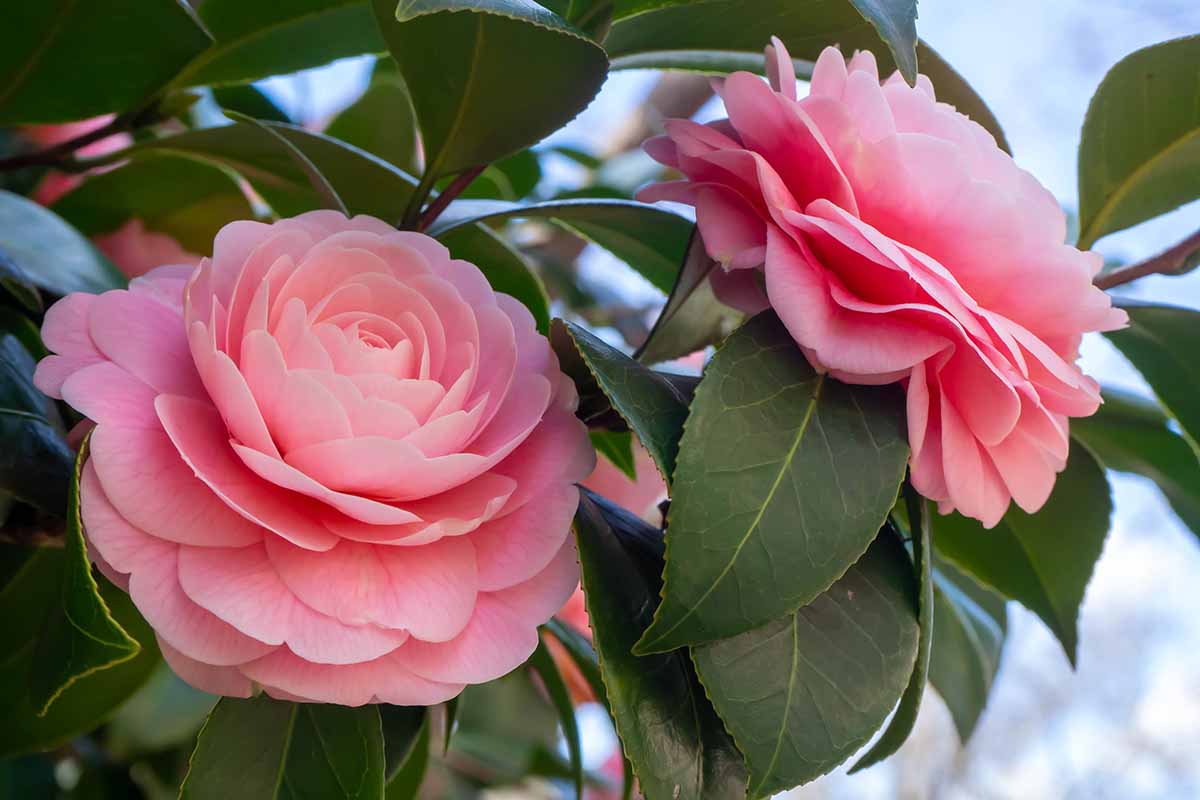
If everything looks good, your plant should be back to its healthy, happy self in no time, and you can let out a sigh of relief.
What type of pest do you think you’re dealing with? Are your camellias experiencing any additional symptoms that we didn’t talk about here? Do you need more help to figure out what’s going on? Let us know in the comments, and we’d be happy to assist!
If you’re ready to continue on your journey of growing camellias, we have more articles you might want to check out next. Here are just a few to get you started:
